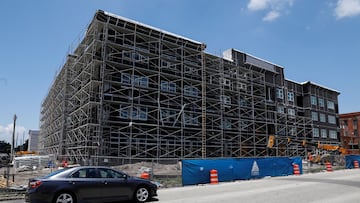WELFARE
What is public housing in the US? Who qualifies for government programs?
Public housing in the United States are government-subsidized housing that is provided to low-income individuals and families.

Public housing units are owned and operated by federal, state, or local housing authorities, and they aim to provide safe and affordable housing options for those who cannot afford market-rate housing. They are a departure from property owned privately or rented from landlords.
These housing units can be apartments, townhouses, or single-family homes located in specific housing developments or communities. The rent for these units is typically set at a lower rate based on the tenant’s income, making them more affordable for low-income households.
Rent is determined by
The formula used in determining the TTP is the highest of the following, rounded to the nearest dollar:
- 30 percent of the monthly adjusted income. (Monthly Adjusted Income is annual income less deductions allowed by the regulations);
- 10 percent of monthly income;
- welfare rent, if applicable; or
- a $25 minimum rent or higher amount (up to $50) set by an HA.
The US government website has a link to find find and contact your local public housing agency.
To qualify for public housing programs in the US, individuals and families must meet certain eligibility criteria:
-
Names of all persons who would be living in the unit, their sex, date of birth, and relationship to the family head;
-
Your present address and telephone number;
-
Family characteristics (e.g., veteran) or circumstances (e.g., living in substandard housing) that might qualify the family for tenant selection preferences;
-
Names and addresses of your current and previous landlords for information about your family's suitability as a tenant;
-
An estimate of your family's anticipated income for the next twelve months and the sources of that income;
-
The names and addresses of employers, banks, and any other information the Housing Association would need to verify your income and deductions, and to verify the family composition;
-
The Public Housing Agency also may visit you in your home to interview you and your family members to see how you manage the upkeep of your current home.
Apart from traditional public housing, the government offers various other housing assistance programs, including the Housing Choice Voucher Program (Section 8), which provides rental assistance to eligible low-income individuals and families in privately-owned rental properties.
The state of public housing in the United States
As per HUD’s Residential Characteristic Report, the average yearly income in 2013 for a public housing resident was $13,730. The report categorises 68% of the residents as Extremely Low Income, with the most significant share falling within the $5,000 to $10,000 annual income bracket, making up 32% of the public housing population.
A reflection of this is in the quality of housing available. Public housing developments suffer from aging infrastructure, including outdated plumbing, leading to maintenance problems and higher utility costs. Limited affordable housing options can lead to overcrowding in public housing units, as well as a lack amenities and community resources.






